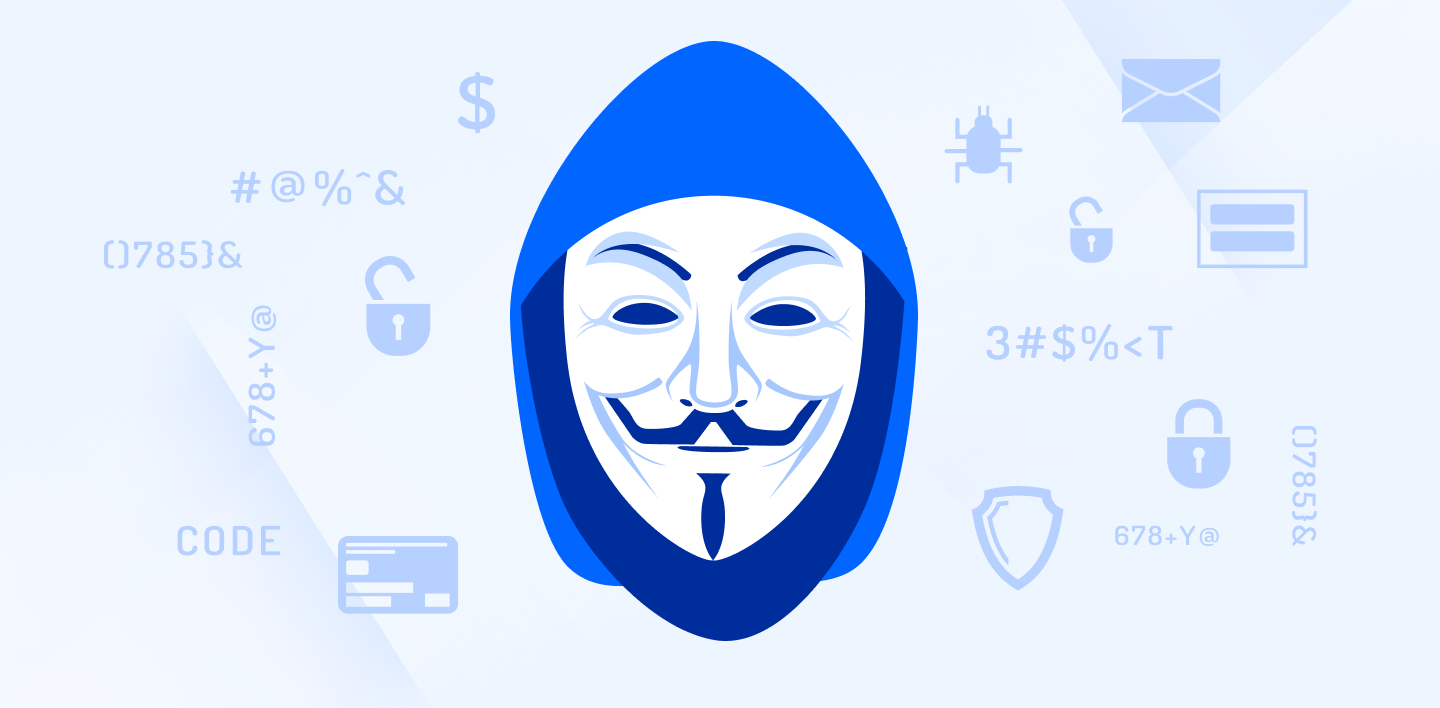7 Effective Security Measures to Combat Cyberterrorism

Cyberterrorism exists, but it is a concept that is difficult to pigeonhole. The story is similar to “physical terrorism,” where there are always shades of gray to consider – Was something an act of terrorism, or was it just an act of gratuitous malevolence?
Many acts of terrorism are definable, and the same applies to cyberterrorism. However, the blurring of the lines is even more apparent with cyberterrorism.
What is definite is that the threat is present, and organizations must have the resources in place to combat cyberterrorism. This guide examines the nature of the threat and how organizations can protect themselves and their data.
What is Cyberterrorism?
Let’s begin with a simple definition – Cyberterrorism is the use of the internet to conduct violent acts that threaten or cause significant harm to life, data, or systems, intending to achieve political or ideological gains.
This modern form of terrorism increasingly has the potential to cause as much “terror” as its physical counterpart. Perhaps more so as our reliance on interconnectivity expands. In the worst-case scenarios, it can disrupt the critical digital infrastructure that supports the very fabric of today’s society.
Here are some of the key facts to keep aware of:
- Targets: Cyberterrorists often aim at critical infrastructure, such as power grids, financial sectors, and healthcare systems, to maximize impact.
- Methods: They employ a variety of tactics, including malware, ransomware, and denial-of-service attacks, to exploit vulnerabilities.
- Motivation: The driving forces can range from political and ideological to financial gain or the desire to start chaos.
- Impact: The effects can be devastating, leading to loss of life, economic damage, and national security breaches.
These are stark facts, but just how real is the threat of cyberterrorism? Again, there are shades of gray to consider.
How Real is the Threat of Cyberterrorism?
To begin this section, let’s look at a startling and comforting fact. According to the United States Institute of Peace, a recorded cyberterrorism incident has never occurred. Not one!
While this is undoubtedly comforting, the same report states that the potential for an attack is “very alarming.”
Then, there are the shades of gray to consider. The Russian interference in the US election process was very much a malicious digital act with potentially serious consequences. But does it constitute terrorism? It was, after all, a cyberattack with an ideological bent.
Of course, the fact that there hasn’t been a “real” recorded cyberterrorism incident can also be attributed to the existing security measures. But this does not infer that we can rest on our laurels.
We live in an age of rapid technological advancement. The advances of AI, cloud computing, and remote working mean the potential threat windows are increasing while the threats are becoming increasingly sophisticated.
Current Cyberterrorism Threats
The cyberterrorism threats that need to be addressed are multi-fold and, for the most part, will be the same tactics and methods as those used against “typical” cybercriminals. In other words, the usual cybersecurity essentials on the internet are a must.
However, the intent behind these threats often distinguishes a cyberterrorist from a cybercriminal. With objectives ranging from causing widespread fear to destabilizing economies or governments, the implications of these threats are far-reaching.
Key threats include:
- Phishing scams: Deceptive attempts to steal sensitive information, or trade secrets. , such as usernames, passwords, and credit card details, by disguising it as a trustworthy entity.
- Ransomware attacks: Malicious software designed to block access to a computer system until a sum of money is paid.
- Distributed Denial of Service (DDoS) attacks: Overwhelming a targeted server, service, or network with a flood of internet traffic to disrupt normal traffic.
- Data breaches: Unauthorized access to confidential data, often leading to the exposure of personal information or trade secrets.
- Insider threats: Threats posed by individuals from within the organization who may misuse access to sensitive information.
- State-sponsored attacks: Cyberattacks initiated by a nation-state or national government to disrupt another nation's infrastructure or to steal strategic data.
- Supply chain attacks: Compromising a supplier's security to disrupt the supply chain and affect multiple organizations downstream.
These threats represent just a snapshot of the tactics used in cyberterrorism, highlighting the need for robust security measures to protect against a wide array of potential attacks.

7 Strategies to Combat Cyberterrorism
Understanding the cyberterrorism threats and the methodologies used is an essential first step in combating cyberterrorism. For the most part, the strategies to combat them will be identical to preventing any cyberattack.
There are exceptions; government agencies, for instance, continuously monitor terrorist behavior patterns and digital communications to preempt potential attacks. These specific measures, while critical, are specialized and beyond the scope of this discussion.
For organizations looking to protect themselves against cyberterrorism attacks a robust security strategy would include the following:
1. Preventive Measures
The saying “prevention is better than cure” is incredibly relevant here. In their own way, each of the strategies we cover will mention this, but there are proactive steps, such as multi-factor authentication, that cybersecurity experts should address.
These measures are not only about technology but also involve policies and human behavior.
Key aspects of preventive measures include:
- Regular software updates and patch management: Keeping software up to date to protect against known vulnerabilities.
- Strong authentication processes: Implementing multi-factor authentication adds an extra security layer.
- Promoting employee engagement by educating all staff members about the risks and their role in preventing attacks.
- Network security: network security is essential, utilizing firewalls, intrusion detection systems, and encryption to safeguard information as it travels across networks.
- Access controls: Limiting user access to information and systems to those who require it for their role.
Effective preventive measures can deter cyberterrorists by making the attack process more difficult, costly, and less likely to succeed. This proactive stance is crucial in maintaining a secure cyber environment.
2. Incident Response Planning
Even with the best preventive measures in place, the possibility of a cyberterrorism incident can never be entirely ruled out. This is where incident response planning comes into play.
An incident response plan can ensure that any disruption from a cyberterrorist attack can be kept to an absolute minimum.
Essential elements to keep in mind when implementing an incident response plan include:
- Incident response team: A dedicated team trained to handle cybersecurity incidents.
- Communication plan: Clear internal and external communication protocols during an incident.
- Disaster recovery procedures: Steps to restore systems and data from backups with minimal downtime.
- Regular drills and simulations: Conducting practice scenarios to ensure readiness and refine the response plan.
- Legal compliance: Understanding and adhering to legal requirements for reporting and responding to cybersecurity incidents.
Preventative measures and other safeguards will ensure an organization will never have to implement such a plan, but it should be considered with the same gravity as an insurance policy.
3. Public and Private Sector Collaboration
Neither the private nor public sectors are immune to the cyberterrorism threat. Sharing information and resources is essential in protecting our digital assets.
Intelligence and resource-sharing are cases of two heads being better than one, which is important in defending against threats that are often too complex for a single entity to handle.
Strong collaboration brings key benefits to the fight against cyberterrorism:
· Shared intelligence: Leveraging the strengths of both sectors to gather and analyze threat data more effectively.
· Resource pooling: Combining resources can lead to more efficient use of technology and personnel.
· Unified strategies: Coordinating efforts to create cohesive policies and response strategies.
· Innovation and research: Working together to develop new technologies and methods to stay ahead of cyberterrorists.
· Community engagement: Raising awareness and educating the public about cybersecurity threats and prevention.
Cyberterrorism doesn’t care whether the target is private or public; both are valid targets in the eyes of the terrorists. Strong collaboration means the sum of the parts is greater than the whole regarding prevention.
4. Advanced Security Technologies
Cybersecurity is an ongoing arms race. In any arms race, the winner will be the one who makes the best use of the most advanced technologies. The current age has seen the sudden emergence of some of the most disruptive technologies for decades, and organizations need to muster them as - without a doubt - the cyberterrorists certainly will.

The good news is that organizations can stay one step ahead in the cybersecurity arms race by leveraging tools like private cloud storage solutions, encrypted emails, VPNs, and other privacy-focused products.
The good news is that organizations can stay one step ahead in the cybersecurity arms race by leveraging tools like private cloud storage solutions, encrypted emails, VPNs, and other privacy-focused products.
Some of the key benefits of advanced security technologies include:
- Artificial intelligence and machine learning: AI and ML can analyze patterns and predict potential threats, adapting to new tactics used by cyberterrorists.
- Behavioral analytics: Monitoring for unusual behavior patterns can help in the early detection of potential security breaches.
- Cloud security: With more data being stored in the cloud, robust cloud security measures are critical to protect against data breaches and leaks.
- Endpoint security: Protecting the endpoints of a network, such as user devices, from being exploited by malicious actors. This includes ensuring the security of mobile gadgets.
- Threat intelligence platforms: These platforms provide comprehensive insights into the global threat landscape, helping organizations to stay informed and prepared.
More advanced security tools, methods, and platforms are available than ever, and organizations must embrace them to ensure comprehensive protection against cyberterrorism.
5. Advanced Physical Security Measures
The emphasis of cyberterrorism security measures is – for obvious reasons – heavily weighted towards cybersecurity measures. However, physical security measures cannot be overlooked. According to one study published on Information Week, 35% of data breaches were physical.
This one fact is a testament to the part that advanced physical security measures have to play in combating cyberterrorism. Among key components to consider are:
- Access control: Advanced access control systems ensure that only authorized individuals can enter secure areas, using technologies like biometric authentication and smart card readers for verification.
- AI-enhanced surveillance: Artificial Intelligence (AI) augments surveillance capabilities, enabling real-time threat detection and analysis, significantly improving response times to security incidents.
- Cloud-based security: Leveraging the cloud efficiently allows for the remote management of security systems, providing scalability and accessibility while ensuring that security protocols are consistently updated and managed.
In the digital age, it is easy to overlook the importance of physical security, but if it’s a weakness, it is there to be exploited. Physical security, including advanced access control systems and surveillance systems, is as critical in the physical world as firewalls and VPNs are in the digital world.
6. Cloud Computing and Encryption
Cloud computing has revolutionized data storage and access but also opens up previously non-existent vulnerabilities. The rise of remote and hybrid working has changed how we work. Encryption plays an essential role in ensuring that this data is protected.
Among the considerations for secure cloud storage are:
- End-to-end encryption: Ensuring that data is encrypted at rest and in transit between the cloud and the user.
- Encryption key management: Safeguarding the keys used to encrypt and decrypt data, preventing unauthorized access even if data is intercepted.
- Regular security audits: Conduct thorough audits to ensure that encryption protocols are up to date and meet current security standards.
Cloud computing is revolutionizing data access, and companies must ensure this data is as safe as possible.
7. Other Considerations to protect against cyberterrorism
The above factors represent the major components of any robust security strategy. However, there are additional practices that also play an essential role in the fight against cyberterrorism.
Among them are:
- Regular security training: Continually educating employees to recognize and mitigate cyber threats.
- Secure software development: Embedding security within the software development lifecycle to preemptively close off vulnerabilities.
- Vendor risk management: Diligently assessing and controlling the security risks posed by third-party vendors.
- Legal and regulatory compliance: Keeping abreast of and adhering to relevant laws and regulations to reinforce security protocols and avoid legal pitfalls.
- Policy development and enforcement: Crafting and strictly enforcing policies that govern data usage, device management, and other security-related aspects.
Each of these is another layer that contributes to a holistic approach to cybersecurity and the ongoing commitment to ensuring that the number of “real” cyberterrorism attacks remains zero.

Vigilance: The Key to Combating Cyberterrorism
The battle against terrorism is not new, stretching from Guy Fawkes' Gunpowder Plot to the modern-day digital battlegrounds that threaten our cybersecurity. Just as physical acts of terrorism have evolved over centuries, cyberterrorism looms as a digital specter over our interconnected world.
While we have yet to witness a defining act of cyberterrorism, the lessons of history implore us to remain vigilant online. The strategies outlined in this article are theoretical defenses and essential practices that protect our online presence against cyberterrorism and other threats to our data and online privacy.

